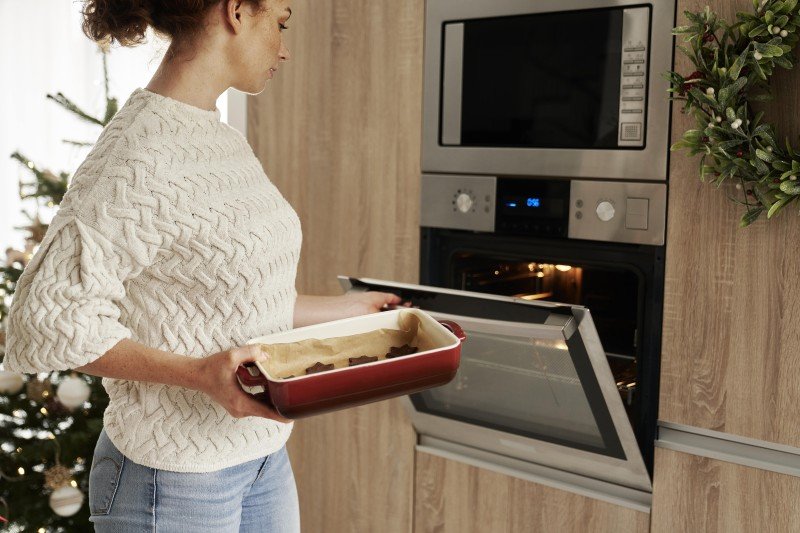How To Tell If You're Ready To Go After Ovens And Hobs
Understanding Ovens and Hobs: A Comprehensive Guide
Cooking has actually come a long way considering that the days of open flames and rudimentary cooking techniques. Today, ovens and hobs are at the heart of modern cooking areas, providing adaptability, effectiveness, and an array of cooking options. Whether you are a novice cook or a skilled chef, understanding the differences, features, and functions of these devices is vital for maximizing culinary capacity. This post breaks down the numerous kinds of ovens and hobs readily available on the marketplace, their functionalities, and how to select the right devices for your kitchen.
What is an Oven?
An oven is an enclosed area developed for heating and cooking food, using numerous techniques such as baking, roasting, and broiling. Ovens On Sales come in different types, each serving distinct cooking preferences and requirements.
Kinds of Ovens
Conventional Ovens:
- Use gas or electricity for heating.
- Typically include a heating element at the top and bottom.
- Perfect for basic baking jobs.
Convection Ovens:
- Use a fan to distribute hot air, promoting even cooking.
- Ideal for baking, roasting, and reheating.
- Decreases cooking time and boosts taste.
Steam Ovens:
- Utilize steam to cook food while maintaining wetness and nutrients.
- Excellent for health-conscious cooking, such as veggies and fish.
Microwave Ovens:
- Use electro-magnetic radiation to heat food rapidly.
- Best for reheating leftovers or cooking basic meals.
Wall Ovens:
- Built into the wall, conserving area in the kitchen.
- Offered in different setups, including single or double ovens.
Secret Features of Ovens
- Temperature Control: Precision heating for various baking and preparing processes.
- Self-Cleaning Options: Some models have self-cleaning modes that utilize heats to burn off food residue.
- Smart Features: Wi-Fi connectivity enables remote pre-heating, tracking, and dish management through smart devices.
What is a Hob?
A hob is a cooking surface area, often described as a range or cooktop, where cookware is positioned for heating. Hobs are readily available in various materials, sizes, and heating approaches, catering to varied cooking requirements.
Types of Hobs
Gas Hobs:
- Utilize burner for direct flame cooking.
- Deal exact temperature level control and are favored by many professional chefs.
Electric Hobs:
- Use electric coils or smooth tops.
- Some designs are geared up with induction innovation, providing rapid heating through electromagnetic energy.
Induction Hobs:
- Cookware should be made of magnetic materials.
- Extremely energy-efficient, supplying quick heat and decreasing burn dangers.
Ceramic Hobs:
- Feature a glass-ceramic surface with heating components underneath.
- Easy to clean however can be less energy-efficient than induction hobs.
Secret Features of Hobs
- Burner Configuration: Varies from 2 to six burners, depending upon design and size.
- Power Levels: Multiple settings enable greater precision in cooking.
- Security Features: Options like flame failure gadgets and child lock settings guarantee security during cooking.
Picking the Right Oven and Hob
Selecting the ideal oven and hob for your kitchen includes cautious consideration of various aspects. Below is a list of concerns to assist your choice procedure:
- What is your main cooking design?
- Just how much kitchen space do you have?
- What is your spending plan?
- Do you choose gas or electric devices?
- Are additional features like smart connectivity crucial to you?
Table Summary of Key Differences Between Ovens and Hobs
Feature
Oven
Hob
Functions
Baking, roasting, broiling
Boiling, frying, sautéing
Cooking Method
Confined heat
Direct cooking surface area
Temperature Control
Adjustable settings
Range settings
Types
Electric, gas, convection, microwave
Gas, electric, induction, ceramic
Cooking Capacity
Larger (can cook multiple meals)
Smaller (concentrate on instant cooking)
Cleaning
Self-cleaning choices available
Usually manual cleaning required
Maintenance Tips for Ovens and Hobs
Appropriate care and maintenance of your cooking devices extend their life-span and effectiveness. Here are vital upkeep ideas:
Regular Cleaning:
- Clean the oven interior after each use to avoid residue buildup.
- Wipe down hob surface areas after preparing to prevent spots.
Inspect Seals:
- Ensure the oven door seals are intact to keep energy efficiency.
- Change worn-out gaskets and seals as needed.
Inspect Burners and Elements:
- For gas hobs, look for blockages in burners.
- For electric hobs, examine coils and surface areas for indications of wear.
Frequently asked questions
Can I utilize any cookware on induction hobs?
- No, induction hobs only deal with magnetic cookware, such as cast iron or stainless-steel.
What is the most energy-efficient cooking device?
- Induction hobs are usually the most energy-efficient option, using less energy than traditional gas or electric models.
How often should I clean my oven?
- It's suggested to clean your oven every few months, or more frequently if you utilize it often.
Can I install an oven and hob individually?
- Yes, both devices can be set up separately based upon kitchen design and space.
What should I think about when setting up a gas hob?
- Make sure appropriate ventilation and adhere to local security codes. It is advisable to have a professional install gas home appliances.
Understanding the features, types, and upkeep of ovens and hobs can considerably boost your cooking experiences. Picking the right devices customized to your cooking style, kitchen area, and security requirements can make all the distinction in accomplishing culinary success. By being notified about your choices, you can take pleasure in a more efficient and enjoyable cooking journey, bringing scrumptious meals to your table with ease.
